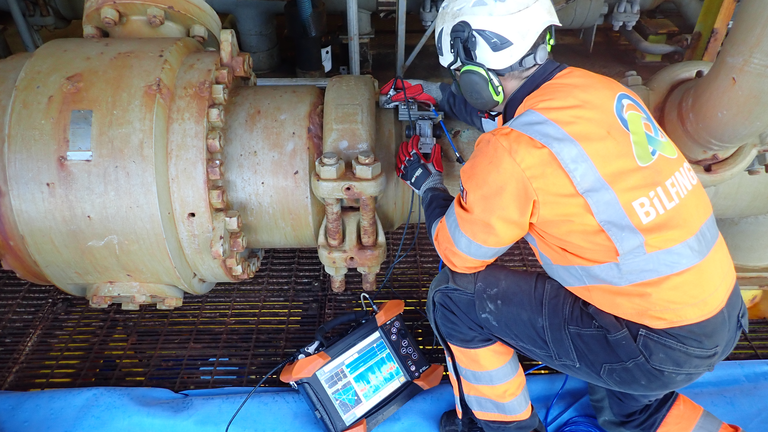Scope:
In the ever-evolving realm of offshore oil and gas, where precision and safety are paramount, our globally renowned client in the energy sector, sought our expertise to navigate the intricacies of inspecting a complex offshore rig hook-up phase.
During the hook-up stage, a new rig is meticulously connected to existing wells and infrastructure, shaping the foundation for safe and productive offshore operations. The integrity of the connection welds is the bedrock of safety and performance.
Traditionally, the go-to choice for weld inspection has been radiography, a method with a well-established track record. However, it comes with its share of limitations, especially in the demanding offshore environment. Foremost amongst these are the palpable environmental impacts and radiation hazards as the use of Radiographic Testing (RT) poses inherent risks to the health and safety of personnel, requiring additional control measures.
Equally challenging is the notable decline of productivity resulting from simultaneous activities. An issue that has led, since the start of the project, to a loss of 4000 man-hours in SEMOPS, due to the stringent safety protocols mandated by radiography inspections. In light of these concerns, our client entrusted Bilfinger Danmark A/S with the task of exploring a viable alternative to radiography for weld inspection during this pivotal hook-up phase.
Services:
Inspection
The recent advancements in Non-Destructive Testing (NDT) have introduced Phased Array Ultrasonic Testing (PAUT) as an effective alternative. PAUT is a radiation free approach that offers real-time imaging for immediate identification, resulting in a streamlined hook-up phase with reduced overall project duration.
PAUT utilises sound waves that are introduced into the material through an array of ultrasonic transducers, each of which can be individually controlled in terms of its timing and direction. This allows for the precise steering of the ultrasound beams, resulting in a more detailed and comprehensive inspection. Moreover the technique provides the ability to inspect welds from a single side to address the accessibility challenges posed by complex pipeline geometries and offshore conditions.
To establish the credibility of the technique, Bilfinger Danmark A/S completed a qualification process in accordance with the stringent standards set by the European Network for Inspection and Qualification (ENIQ). This process encompassed a comprehensive evaluation of our NDT procedures, the efficacy of our equipment and the proficiency of our personnel.
The qualification process included both technical and practical evidence, such as previous practical experience, laboratory studies, mathematical modelling, and logical reasoning. Practical trials were also conducted using representative test pieces that closely resembled the actual components to be inspected. The culmination of this rigorous process provided evidence that PAUT was a dependable and robust inspection method, well suited to replace RT for evaluating both Carbon Steel and Corrosion Resistant Alloyed (CRA) materials.

